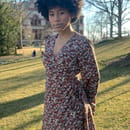Warning: Spoilers Ahead
The return of Euphoria to HBO Max for a second season has given rise to a wave of Gen Z support over the last few weeks as young people everywhere took to social media platforms to express their obsession with the show. Of course, it is no secret that the hit teenage drama has our generation in a chokehold. On TikTok alone, the hashtag “Euphoria” already has 13 billion views and counting. Meanwhile, the launch of the second season at the start of the month brought in 2.4 million viewers, marking it HBO Max’s most successful digital premiere ever.
Despite Gen Z’s reverence for the series, the popular teenage drama has also been met with a fair share of criticism, with many critics observing how often the drama skirts the lines of realism into a world of confusing fantasy and unbelievable storylines. Critics such as Richard Lawson have pointed out that the show’s use of bright colors, loud soundtracks, and a camera that whizzes and flies as opposed to staying still cause the show’s storyline to become an unreliable haze. Moreover, others frequently argue that the show fails to accurately portray the experiences of modern teenagers by overdramatizing adolescent experiences.
In regards to the dramatic visuals, there is simply no denying that at times Euphoria can feel every bit of a music video as it does a television show. From Zendaya’s intense dance number during the season one finale to frequent clips of characters dancing in the center of a crowded room, it is unsurprising that some have determined the show a tacky reimagining of a long-form music video.
Critiques relating to the show’s depiction of rule-breaking and blackmail equally warrant consideration. At the start of the show’s release, many were quick to note the implausibility of Nate’s attempt to blackmail Jules. The Nate-Jules blackmail plot line proved so confusing that outlets released articles detailing potential theories regarding Nate’s rationale in his interactions with Jules, as many viewers agreed it was not very clear.
Euphoria skeptics have also maintained that the show’s wardrobe fails to even closely resemble those allowed under the average high school dress code. This inconsistency has inspired the recent Tiktok trend, “Euphoria High,” in which creators dress up as characters from the show. As noted by Refinery29, the trend ultimately points to how overtly off-base the wardrobe in Euphoria can be as the trend encourages creators to wear either revealing or impractical outfits that would 100% get any of us dress-coded in a public school hallway.
The persistence of these unbelievable components of the HBO hit show has resulted in critics and supporters alike to question how such a seemingly inaccurate depiction of high school life could become one of the front runners for the most popular teen dramas of our generation. The answer to this question may be summed up in one word: theater.
At the root of the production of Euphoria is a homage to theater, not television. With closer examination, it becomes evident that the series’ episodes are not structured as a typical television episode at all but instead as a theatrical performance. The performances of each character are emphasized by the show’s use of dramatic lighting. For example, the use of a bright, stage-like spotlight for each character in the first episode of season two seems to signal that a larger production may be at play.
Even more strikingly is what looks like a nod from the show’s creators to the classic Shakespeare play Romeo and Juliet. It is no secret that Rue and Jules, the show’s main characters, are star-crossed lovers, as it seems like everything from drugs, to family, to gender, has gotten in the way of the two of them being together. Yet, from the start of the first season, it appears the show has left small hints suggesting a potentially loose modern rendition of the timeless Shakespearean love story. For one, the names “Rue and Jules” seem to perfectly harken back to the names of the original star-crossed lovers “Romeo and Juliet.” In addition, in episode six of season one, Jules dresses up as Juliet from the 1996 film rendition of the play. This is then coupled by Jules reciting lines from Act 2 Scene 2 of the play later in the episodes, as she states to Rue:
“Although I joy in thee,
I have no joy of this contract tonight.
It is too rash, too unadvised, too sudden,
Too like the lightning, which doth cease to be
Ere one can say “It lightens.” Sweet, good night.
This bud of love, by summer’s ripening breath,
May prove a beauteous flower when next we meet.”
The understanding of a potentially purposeful theatrical undertone to the show encourages an ultimate reexamination of the show’s critique. The acknowledgment that the show’s producers wish to create a modern theatrical production not only explains away the bright flashing colors and unignorable music but also offers it a new value. The use of stark reds and shadowy grays in camera shots no longer signals amateur filmography but instead eerie foreshadowing to death and loss. Lyrics such as “still don’t know my name” points not simply to teenage angst but teenage innocence as related to first love and identity.
The persistent use of theatrical elements by Euphoria suggests that the appetites of Gen Z may be shifting from craving realistic storylines to dramatized tragedies. The positive reception of the show’s second season only seems to bolster this claim. That is to say, Euphoria’s popularity may be indicative of a new age of mainstream television that marries the beauty of traditional theater with imaginative digital trends.


